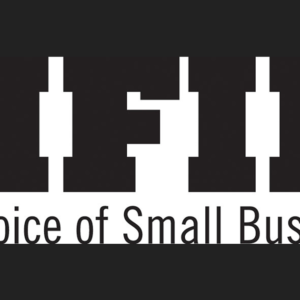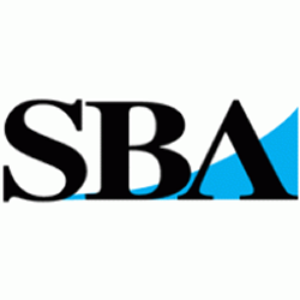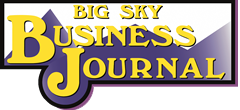Made-in-Montana, just in time for Christmas. While everyone wants to shop local, that can easily mean shopping “Made-in-Montana” products. There are sooo many. The idea of publishing a list of Montana producers of great gift items as a helpful guide, quickly diminished to just a list of those in Billings… but even then it turns out to be a v-e-r-y long, long list on the Made-in-Montana website.
But wait! There are many, many producers and manufacturers in Billings who aren’t even listed on that website. Statewide the website lists 2049 – and that again comes nowhere near listing all of them …
No doubt about it Montana is full of very creative, hardworking and productive people—just take a look.
Products made in Billings:
A Mindful Kitchen
— 100% Grass-Fed Beef, Body Lotions, Spice Blends, Clean Cooking (406) 272-2188
Abby Lindstrom King, Art
—Mixed media fine art (406) 690-2136
ABC Honey
— 100% local fresh honey. Other items include honey related gifts such as beeswax candles. Ryan.abchoney@ gmail.com
Agri Organics
—Compost Made from yard trimmings, leaves, coffee grounds, wood chips, and livestock bedding with manure. (406) 855-1347
Agrika Foods
— Teff seed | grain| flour,-25 lbs. Premium Teff Brown Flour; Coffee, 1-10 lbs Premium Dark Fine Ground High Crema Espresso Coffee; 1-10 lbs Premium Dark Medium Ground Coffee 406) 371-1977
Alena Larson
— Hand- crafted felted scarves, shawls, hats, mittens Hand-crafted felted jackets, vest, top Hand-crafted felted pillows, throw blanket, wall decor Eco dye silk scarves (406) 670-0568
Anita’s Tea and Tangle
—Reusable and reversible Surgical Masks made here in Montana with 2 layers of100% Recycled Cotton layered with 100% polypropylene (406) 561-1198
Antelope Santee Dolls
—Native American Dolls (406) 647-1824
Aspinwall, Inc.
— Quality Apparel with Logo Designs Created by owner Derek & hand Screen Printed in their Downtown Billings Storefront (406) 702-1586
Auto Trim Design Graphics
— Montana Themed Decals Vehicle Stickers and Decals Indoor and Outdoor Signs and Graphics Wooden and Metal Decorative Signs Commercial Graphics and Signs (406) 655-6200
Backwoods Casting & Crafts LLC
—Specializes in unique, custom, rustic rings and jewelry as well as other handmade crafts.
BD Design.. (406) 690-4481
–Handmade, home décor, corn hole games, personalized gifts, made from plain pine or reclaimed wood; painted, stained and distressed to our customer’s preference. Prefabricated signs to personalize or take and make for a fun evening at home! Mugs, vinyl decals, drink caddies, wall décor, baby gifts, wedding décor, wedding gifts, and unique, one-of-a-kind gifts for everyone.
Beard Mountain Industries.. (406) 861-2923
—Line of men’s grooming products. Items include beard oil, moustache wax and beard balm. (406) 208-4846
Beartooth Design Co.
— Signs Custom graphics, Home Décor, Furniture, Custom Apparel.. (406) 655-9575
Beartooth Photography
— Nature Photography Photo Note Cards High-quality photos feature Montana’s great outdoors & wildlife, available in a variety of sizes.. (406) 861-0190
Belle’s Bites
—Home-made dog treats… (406) 670-5396
BelPhia Creative
—Hand thrown/built ceramics, watercolor, acrylic, mixed media.. (406) 671-3191
Best Doilies and Crafts
— Handmade Crocheted Items, Doilies & Table Runners, Aprons for Children & Adults, Nylon Dish Scrubbies, Kids’ Snuggle Blankets, Microwave Potato Bags… (406) 581-0003
Beveled Edge of Montana
—Wood furniture, signs, boxes, shelves, wedding decor and custom orders.
Biker Betty
— Clothing & accessories created for women Bikers. Artwork for our product line is created using motorcycle parts and accessories. (406) 223-9074
Bootstrap Designs
— Bootstrap Designs produces individually handcrafted jewelry items made from Montana copper, leather, and other row materials. (406) 850-8433
Budugalee
Handmade greeting cards featuring digital images, made with mixed-media components. Also photos products such as magnets, keychains, etc. (406) 672-2513
Burnin The Bone BBQ
—Meat sourced whenever possible from Project Meats – Special House made Sauces: Rascalberry Sauce- Made using Montana Huckleberries Apple Pie Moonshine BBQ Sauce… (406) 561-6708
C&J State Quarter
—Rings Made From U.S. Quarters Available in Sizes 4 – 15 (406) 855-4978
Canyon Creek Traders
—Necklaces, bracelets, earrings, rings, hair ties Sterling silver, German (nickel) silver, copper, fine silver Turquoise, jasper, coral and many other gemstones. (406) 861-7721.
Ceilon Aspensen, Art Maker
—Artwork Originals & Reproductions Dawings & Paintings Prints & Greeting Cards Other Visual Art (406) 578-8822
Chalet Market
—Made in Montana smoked buffalo, elk and beef sausages, snack sticks and jerky. We offer “All Things Huckleberry”, plus Flathead cherry & chokecherry flavors, jam, jellies, local honey, caramels, coffee, tea, candies, lotions, soaps, candles and so much more! 1-877-223-5763
Colt James Ranches
—Montana Chop Sticks: Gourmet Wagyu Beef Sticks (406) 425-1027
Connie’s Creations
—Dog Boots made from Polar Fleece, Denim, and Cordura (406) 252-4756
COOKIE’s Chocolates
—Chocolate Pizzas, Dipped Oreos (decorated for the Seasons), Foil-wrapped Rose Buds, Western-themed Novelties, Truffles, Gift Baskets, Corporate Gifts, Custom Designs at your request. (406) 698-4976
Crazy Dog Lady Crafts
—Handmade gifts for dog lovers as well as up cycled wood projects. (406) 371-3174
Creations in Wood
— Oak Home Furnishings & Accessories -Montana Agate Lamps -Deacon’s & Quilter’s Benches -Bachelor & Library Chairs -Jewelry Boxes & Hand Mirrors -Necklace Boards & Trophy Shelves -Shadow Boxes & Picture Frames -Quilt Racks & Doll Cradles (406) 245-5836
Cut-n-rust
— Cut-N-Rust creates unique Metal art pieces using different kinds of metals, mixing old with the New. We at Cut-n-Rust use innovative techniques to make our pieces come to life whether it is a driveway sign or a Montana key chain. (406) 598-2627
Debbie Desjarlais
—A line of greeting cards inspired by the Fort Peck Assiniboine traditions. The Star Quilt Collection is a series of four colorful cards with the cultural story of Debbie’s star quilts on the back. (651) 263-2151
Dennis Randall
— Dust pans, made from pine trees, old barn wood, and used Montana license plates, can be made with other plates on request. Squirrel feeders, made from old and new cedar fence and some barn wood (406) 281-3251
Dennis Rollins
—Custom made leather products, including wallets, belts, suspenders, cell phone holders, holsters, gun belts, knife sheathes, bracelets, bags, vests, coasters, money clips, purses, 3 D pictures, waste paper baskets, tablet covers … (406) 855-2640
Doggie Style Gourmet Treats, LLC
— Handmade dog treats made from the finest ingredients such as: Fresh ground oats, all natural peanut butter, pumpkin, bacon, cheese, carrots, unsweetened applesauce, carrots, strawberries, blueberries, honey, and herbs. (406) 702-1253
DragonFire Designs
-Customer drinkware, handmade jewelry, photography. (406) 698-8136
Dun a Si Farm
— Raw wool & carded roving Washed wool curls & handspun wool yarn Yarn-natural fibers, fiber blends plant fibers Hand-woven scarves, shawls, blankets Hand-felted scarves, accessories & ornaments 406) 373-6542
Elle Bear’s Fabulous Designs
— glitter tumblers with quotes. They are covered in resin. (209) 769-9803
Engraveables Custom Laser
—Laser Engraved Products Plaques & Awards Jewelry Boxes Key Chains & Name Tags Mugs & Glasses Flasks & Mouse Pads (406) 245-1681
EssBe Creations
—One of a kind Zipper pouches, cosmetic bags, small purses, one of a kind half aprons and full aprons (406) 670-9817
Fairy Ring Arts
—Articles made from polymer clay. Ornaments, jewelry, beads, treasure boxes, small home decor items (406) 670-2902
Fall to Pieces Mosaics
— mixed media mosaic art for home and garden, and also sell mosaic tiles cut from china and other dishes. My finished mosaic art consists of wall hangings for indoor display in shapes including birds, flowers, hands, coffee cups, fish, figurines, and flower bouquets. I also make mosaic mirrors. For outdoor use, I make garden rocks/doorstops. My indoor pieces are not only home decor but also works of art. They are distinguished by attention to detail, color sense, quality materials, and careful workmanship. Each piece is made using mosaic tiles from my vast collection of dishes, knickknacks, beads, mirrors, and found objects. (406) 671-9605
Fashions By Little O
—Dog bandanas designed to slip over a dog’s collar, designed to move with your dog and maintain it’s shape. Available in four sizes: XS, S, M, L. Now making treat bags, and poo bag holders. (406) 628-6864
Flying Colors Windsocks
—Custom Windsocks Handmade, appliqued, silk-screened windsocks are constructed with durable flag nylon in rich colors, and are available in a wide selection of designs (406) 259-6588
Flying V Creatives
—Wall Decor made from reclaimed Montana lumber including barn wood and snow fence. Furniture built from reclaimed Montana barn wood. (406) 200-0370
Fustercluck Creations
— wood and resin tables wood and resin bowls wood and resin signs resin bottle stoppers resin tumblers resin countertops 406) 489-2850
Gan Aegla
—Handmade bath and body products in a variety of scents. Our soaps contain a proprietary blend of oils and butters which are designed to be skin-friendly. (406) 371-3989
Gary Little
— Wall art – 3-D hand-painted clay dioramas of iconic Montana mountain scenes Smart Signage – in-house smart tv streaming local video or thumb driven slideshow (406) 256-3025
Ha Vren
—A variety of artistic elements: Jewelry, Photography, Paintings, Altered Designer Accessories, Altered Designer Home Elements, Fabricating Artistic Elements, Finished Artistic Elements, Graphic Art, Reproduced Photographic Elements, Designing Personalized Personal Decor and Accessories .. (406) 259-6163
Hands On Fun Toys
—Children’s hand and finger puppets, hand-turned jump ropes, miniature wooden toys, wood-burned Montana (and other shaped) ornaments (940) 613-6907
Hopkins Handcrafts
—Jewelry, like black cord bracelets and necklaces with walnut wood pendants that are Montana themed (bears, state of Montana, fish, bison, etc.). (406) 426-2494
HunterMade Prodcuts
—Custom hand crafted and turned writing pens, and other small items (406) 860-4959
Images By Michael
—Color and Black & White Scenic Images Macro Floral Images Western & Wildlife Images Boxed Note Card Sets Prints Available in Various Sizes (406) 671-7069
Jennco Design
—Tables, gates, signs, beds created from wood, epoxy, steel, and concrete (406) 697-7001
Jill Nauman
—Pottery dinner wear and ornaments (406) 697-3102
Jill Cookies
—Homemade dog cookies – made with Wheat Montana™ flour, Hutterite Colony eggs, plus other sundry items. Flavors available are pumpkin, peanut butter and jelly, ginger snap, apple/maple/bacon,beefy cheese, cheddar bacon, cranberry, blueberry, raspberry/coconut/carob, coconut/carob, and pizza. Grain-free products are also available featuring cheddar bacon and peanut butter and jelly. (406) 861-1932
JMH Limited Editions
—Custom Woodworking Furniture, Cribbage Boards, Shop Benches, Cabinets & Jigs Custom Formed and/or Tooled Leather Items Consulting, Advising, Designing (307) 299-8693
John Felton – Hardwood Art
—Marquetry Jewelry and Keepsake Boxes Hardwood earrings Various Gift Items (406) 672-6542
John Standish
—Household decorations handmade with blacksmith methods. Naturally raised beef. Naturally raised lamb. (406) 248-8094
Laughing Lynx Herbals, LCJF, LLC
—Herbal medicine, some of those herbs responsibly foraged from the State of MT, mostly South-Central Montana. I make traditional Western herbal products like infused honeys, herbal vinegars, and of course tea. (406) 545-8467
Lazuli of Lenore
—Custom made handwoven items such as the following: Clothing: coats, shawls, vests and scarves Linens: table runners, kitchen towels, tea towels, tea and French press cozies Household items: blankets and lap robes Art works: wall hangings (406) 321-0111
Linda’s Crafty Side
— Crocheted Alpaca blend & Wool blend hats, scarves, clothing, guitar pick jewelry plus much more. (406) 208-5612
Little Shell Design
— Handmade Native American Products Dolls & Dreamcatchers Rawhide Ornaments Medicine Bags Ribbon Shirts Jingle Collars (406) 451-9732
Lori Blaylock
— Handcrafted copper, silver & stone jewelry Art: Wildlife/nature in graphite & pastel (406) 860-8105
Lucky For Sure
—Necklaces made from vintage poker chips from the 30s, 40s, and 50s. The poker chips are vintage Bakelite and Clay. Bakelite is considered the “first generation” plastic, and is very collectable. (406) 860-1847
Mangum Design Co.
— Custom illustrations – digital illustrations created by hand, printed in Montana on canvas or cardstock, also available as digital downloads. (406) 670-2650
Mariah by Design
— Bath bombs, bath truffles, sugar scrub, and body butter. Lotion bar, soap, shave bar, botanical salt soak, lip scrub, and lip balm. (406) 690-4584
Montana Block Company
— End-Grain Butcher Boards High quality butcher boards made for use in the kitchen, made from solid, American sourced hardwoods Kitchen Wares (406) 861-5754
Montana Mittens
— mittens from old wool sweaters — These mittens are pretty, warm & comfortable. Each pair is unique (406) 698-2367
Ranch House Meat & Sausage Co.
—BACON! Sausage – Bratwurst and Summers Snack Sticks – multipack and single pack Jerky Meat trays Deli-cut lunch meats (406) 373-6315
Montana’s Backyard LLC
—Raw honey and honey products. (406) 850-8248
Rattlesnake Forge
— Rattlesnake Forge is a veteran owned blacksmith forge located in Billings, MT. We make customized metal and wood products. Our products include indoor/outdoor decor, tools, hardware, furniture, etc. All of our products are handmade/hand forged from reclaimed or scrap metal and wood. (406) 697-2966
Red Oxx Manufacturing, Inc.
—produces handcrafted soft-sided luggage & briefcases, as well as rugged adventure gear guaranteed to last. Every Red Oxx product is backed by an unconditional lifetime warranty. (888) 733-6999
Rock Creek Soaps
—Bath and body care products, including vegan handcrafted artisan soaps, family-safe bath bombs, shower steamers and bubble bath, and luxury moisturizers. (406) 702-0412
Rock Treads LLC
– Rock Treads are a 100% American made universal aluminum traction kit that works on ANY wading boot or shoe. Aluminum is softer than the rock, but harder then the slime in rivers. Our patented shape allows the Rock Tread to cut the slime, but grip the rock. Our custom installation methods assure a lifetime hold of your Rock Treads discs, no matter the brand or type of wading boot you have. (406) 426-0620
SmwDesigns
—SmwDesigns builds custom wood products right here in Billings Montana. From custom shelves to dining tables, we will build you a product designed to last. (406) 698-7246
Stonely Studio LLC
—Handcrafted Wood Products for the Fly Fisher & Outdoorsman Original Custom Designed River Maps River Map Fly Boxes River Map Cribbage Boards & Plaques Engraved River Map Stainless Steel Drinkware, T-Shirts Free Personalization, Custom Orders Welcome Our wood products are handcrafted from beech, cherry, curly maple, mahogany or walnut wood, custom designed and laser engraved. On our signature ‘River Map Fly Boxes’ and other products, you can choose from over 500 original river maps. (406) 656-6326
U-Neek Bar-B-Que Sauce
— Moerkerke Foods manufactures a product U-NEEK Bar-B-Que sauce. This sauce has been family owned for generations and still continues to keep the tradition going producing one of the best sauces in the country. Its taste is like none other. Located in Laurel Montana. (406) 690-1012
William Nets
— Handcrafted fishing nets (406) 672-0976
Your Fairy Dog Mothers
— Your Fairy Dog Mothers supplies consumers pet-care products, handmade in Montana. These products include pet toys that provide fun, enrichment and mental stimulation. (651) 206-9291
Here’s a sampling of Made-In-Montana producers from around the state.
2-Stroke Brands, Missoula
—a subtle yet powerful mix of scents reminiscent of the two stroke exhaust smell you get after chainsawing or snowmobiling in the woods
1 Love Hemp, Polson
—high quality, lab tested CBD and CBG hemp tinctures, salves, lotions and other products.
21 Creations, Belgrade
—Wood turned products. Bowls, pens, boxes, picture frames, and many other products made out of wood
2nd Times a Charm,
—Rings, bracelets, earrings and necklaces made from recycled forks and spoons. Wooden wine racks.
100% Pure Piano, Belgrade
—Solo Piano Favorites – Available on CD or by digital download, Marilyn Byrnes is featured on the Steinway ‘B’ grand piano: “A tranquil piano experience weaving classical and contemporary piano favorites into a tapestry that will relax and refresh your spirit.”
3 Generation Novelties, Kalispell
—Sewing and crocheting with some small beaded items as well. Novelties consist of useful items and conversation pieces, all of which make for great gift-giving to family and/or friends.
3G Beef, Helmville
—Montana born, raised, and processed beef. Our cattle are raised on the fresh mountain air, clean mountain streams, and the rich land of Montana’s Blackfoot Valley in Helmville, MT.
3K Crafting, Miles City
— Goat milk and oil based soaps. Other products include lotions, lip balm, body butter and bath bombs
4 Dot Ranch, Belgrade
—Mouse trap.
406 Antlery, Boulder
—Belt Buckles, Jewelry, Hair Accessories, Cribbage Boards, Letter Openers, Slingshots…etc.
406 CBD, Winifred
—Our products include tinctures, salves, gummies, capsules, cream, lip balm, coffee, and bath bombs.
406 Coaster, Arlee
— Montana branded coasters made from authentic lodge-pole here in Montana.
406 Farmhouse Customs, Belt
—A small business in rural Montana. We have a laser and CNC machine and produce products for painting projects, wooden and leather jewelry, and home decor.
406 Fly Lines, Livingston
— Vintage Series Fly Lines Weight Forward Line Double Taper Line 406 Fly Lines are designed for fiberglass and other slow action fly rods.
Beaverhead Treasures, Dillon
—specializes in hand crafted quilts and leather goods. Montana’s natural world beauty inspires distinctive products from a western perspective.
Beaverhead Honey Co., Dillon
—Beaverhead Honey, straight from our hives in South West Montana.
Honey Food Candles
406 ScentStations, Malta
—All Natural Soy Wax Candles scented with candle fragrance and essential oils. Wax melts made with natural soy wax and candle scent.
406 Soap, Kalispell
—We make all our soaps through cold process, using a variety of different oils and fats. We keep our batches small and have a limited number of molds as we design and make them ourselves.
406 Soap and Candle Co., Kalispell
— Handmade artisan Tallow soaps made with beef tallow, Shea butter, olive oil, coconut oil and castor oil. Includes clays and skin loving ingredients, essential oils and fragrance oils.
406 Steak’n Company, Bozeman
—Beef Bacon Strips and Crumbles: Traditional, Black Pepper, Maple
406 Wax, Jefferson City
—Hand poured candles that can be customized to your liking in every way from size, color, scent to wax type and strength.
406 Wood Works, Missoula
—Seasonal Wreaths-made with decoration mesh Wood Artwork- handcarved or burned Mason Jar Nightlight
406 Woodcrafters, Lewistown
— Handcrafted, built one at a time wood jewelry boxes, keepsake boxes, collection boxes, tea boxes, gun presentation boxes, small boxes to big boxes. Also one of a kind coffee tables, side tables, entry tables, sofa tables.
406Maker, Helena
—Leather Products: tote bags, women’s clutches, desk pads, valet trays, key rings, hatchet covers, knife scabbards, leather bond journals/notebooks, wallets, and credit cardholders.
406Spices, Laurel
— Bold Flavors In Spicy Artisan Seasonings And Rubs. Only Pure Spices and Herbs No MSG, No Gluten, No Fillers, No Preservatives, Ever! Grizzly Espresso Steak Rub Absaroka Mountain Chicken Rub
41 Grains, Circle
We are producing locally grown crops such as wheat and chickpeas into consumer items like flour, baking goods, and other food items.
49th Apparel, Plentywood
—Creating clothing that is fun, functional, and most importantly, COMFORTABLE! No itching or tugging.
5 Valley Woodcraft, Missoula
—Hand carved household wood products made from wood grown in MT, and sealed with natural products grown in MT
5518Designs, Butte
—5518 Designs branded goods are outdoor and recreation inspired, original-art graphics printed on high-quality apparel, accessories, and paper products. Services also include custom graphics.
9-Mile Creek Traders, Florence
— Wooden buckets, barrels, leather and fur belt & neck pouches, tanned hides, fur hats, garments, raw hide, wall décor and special orders.
A Cut Above Quilting and Longaming, Garrison
—Custom Quilts, table place mats and runners, Embroidered towel sets, microwaveable products, and lingering services
A Montana Story, Helena
— Young Reader Chapter Book – ‘Spotted Flower and the Ponokomita’ Set in the early 18th century when the American Indians of the Northern Plains got their first look at a horse (ponokomita), author K. Follis Cheatham’s accurate research helps tell about a lifestyle that existed thousands of years before the horse arrived to the plains of the Northern Rockies.
Badger Made, Corvallis
—Wallets, Purses/Handbags, Children’s clothing, Headbands, Custom drinkware



